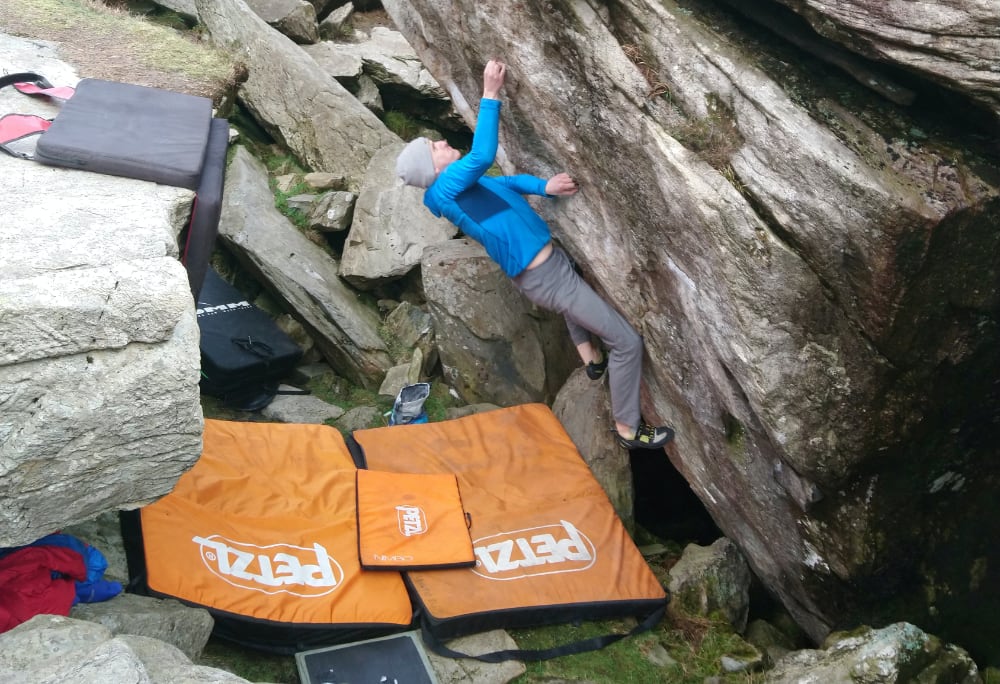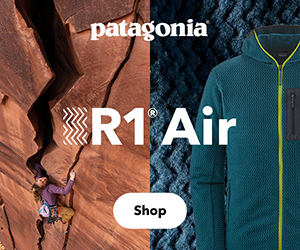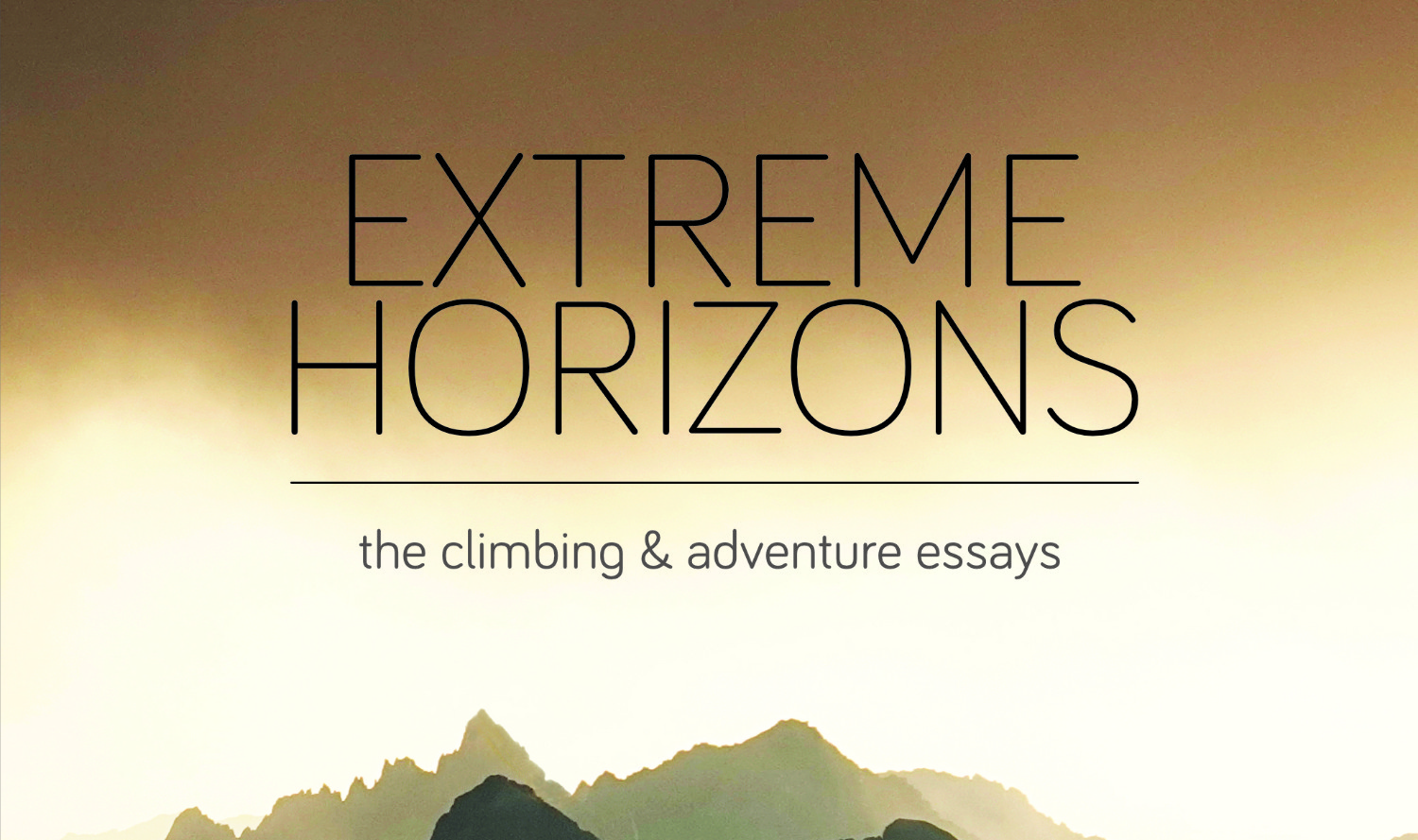Introduction
I’m going to start this piece with a confession: I am wildly biased when it comes to Petzl pads. After using scores of bouldering mats in the past twenty years, I honestly think the Petzl crashpads are the best I’ve used.
This isn’t intended as an impartial review. This is an explanation of why I love these pads so much and what they have over others that makes them stand out.
It is unusual to review something that isn’t fresh onto the market. However where a review of a brand new product can give you the insight into what it’s intended to do, it can’t tell you whether it is still doing it years down the line. I’ve used my CIRRO in Font, Sweden, Germany, Scotland and of course relentlessly at home in North Wales. They’ve had a battering and it is the effectiveness of the features I’ll look at here, while also pointing out some of the downsides and issues found over the past six years or so of dragging my pad all across Europe.
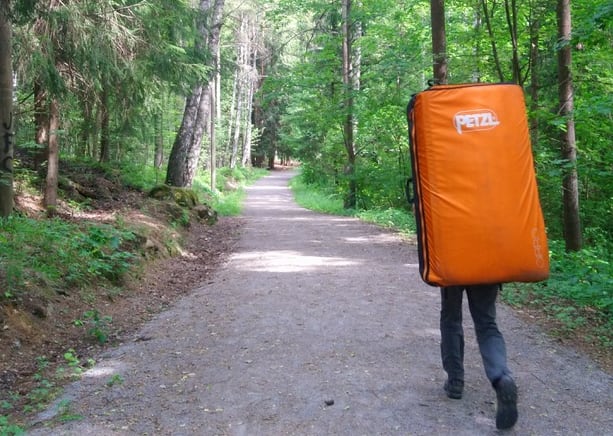
The Range
It seems odd looking back that Petzl didn’t turn their hand to bouldering pads earlier; after all the Petzl Roctrip had achieved legendary status more than a decade before and often featured bouldering trips (watch There Was No Robin des Blocs, as well as the excellent Tuzgle film) but before 2014, it seemed perfectly normal that they left it to someone else. It seems once they came into the market, though, they were intent on doing things differently and creating a market leader akin to their outstanding headtorches and world class climbing hardware.
The current range is exactly the same as when first released, with the ALTO a “normal sized” pad, the CIRRO an extra-large version and the NIMBO being their supplementary pad. Ignoring the NIMBO for a moment, both the ALTO and the CIRRO share many attributes that are best described together. The best explanation of the difference is simply scale: the ALTO sizing up at 118cm x 100cm x 10cm while the CIRRO swamps it at 148cm x 118cm x 12.5cm
Features
Both these pads are a taco style, meaning they fold in half to be transported without a hinge along the middle. This means that there is a reduction in the risk of grounding out through a weak spot. While other pads have suffered with the continual folding create a different sort of weak spot, it seems the quality of the foam used – which is exceptional – means that after nearly six years of regular use, this is certainly not the case.
The foam creates a nice mix of soft to land on giving a comfortable catch while not being so soft that a fall from height means you ground out through the bottom. It is fairly easily manipulated around uneven surfaces too, although not that much given the size of them. Some pads can be a little unforgiving, others don’t offer that support but the Petzl pads, even after several years, strike that balance very well.
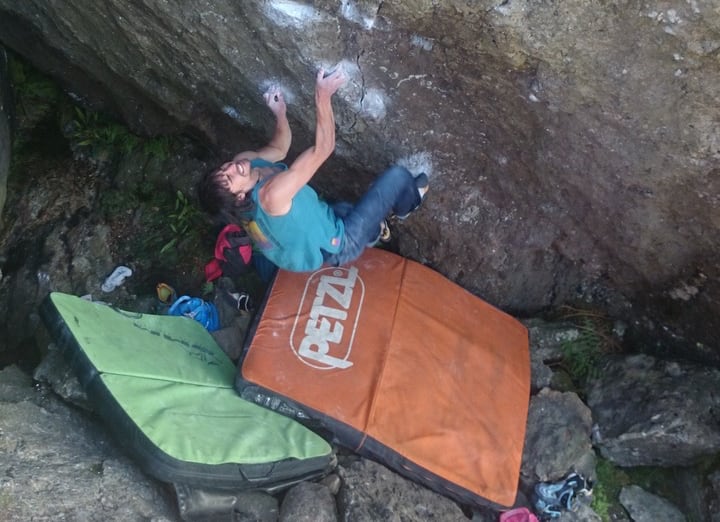
These were some of the first pads where the inside of the fold goes down on the floor, meaning a pad placed on mud – or worse, cow or sheep poo – no longer muddies your back or the boot of your car. It does create an issue though, in that now, the climber is now landing on the same straps that are used to carry it in, potentially creating a trip hazard which Petzl have addressed in a unique way...
...It's these straps that made me so excited to get a CIRRO in the first place. Not only do they have two substantial shoulder straps, both the CIRRO and ALTO feature a substantial waistband and chest strap; with landing problems eliminated by including Velcro rather than plastic buckles. Furthermore, to prevent against a trip hazard, a large piece of material unzips and folds over the top of the straps when the pad is in use.
When not in use, the same zip folds around the pad and keep everything closed up. This has the added advantage that, unlike most other pads, the bottom is sealed, meaning you can drop a rogue brush in and not lose it on the walk in/out.
Finally, for those short hops where unzipping and zipping is a little too much faff, there is a long Velcro strap running the length of the pad that forms as a shoulder strap and a grab handle for a quick pad shuffle. The strap can also be used to turn your pad into a comfy armchair!
The NIMBO
First glance and this little pad looks practically useless. But if I lost it now, I’d be straight out to get a replacement; it is that useful. Often described as the baby changing pad in our house, this single foam pad feels more like a glorified Frisbee but serves two really useful purposes.
Firstly, for sitting starts, as these often aren’t right underneath where you want your main pad. They do a good job of keeping your feet and backside both clean and dry. I’ve even been known to use it as a stepping stone on wet ground. Secondly – and more important from a safety point of view, which is what pads are for don’t forget – they cover the gaps in between pads and stop those danger spots. Landing on the edge of a bouldering mat can often lead to twisted ankles but the NIMBO helps to reduce this greatly by giving a stable platform, using the soft foam from the main pad to great effect.
They’re not cheap but they are definitely worth it, especially considering how small and transportable they are.
Longevity Of Petzl Pads
So after five years of use and abuse, what has stood the test of time? When a product first comes out, the features are heavily publicised but which of them have proven useful? Which have been tried and ditched? And what has changed over time?
- The Straps
It used to be the case that boulderers were pretty lightweight in their kit and even now, a big sell of the discipline is “all you need is shoes and chalk!” but ask any seasoned boulderer and they’ll tell you this isn’t the case. The lack of variety in a boulderer’s bag means they can take more of the same: two pairs of shoes, more brushes, and another pad. The weight does go up. Carrying such large weights means the unique straps of the Petzl pad are by far the most comfortable I’ve ever used. Even now, I’ve not seen anything as effective.
Verdict: Big win - The Zips
A small confession here: I’m not using the original cover for my pad. The reason for needing a replacement was the zip; most likely damaged with sand from Font, although surely this would be a prerequisite of any pad made in France…
The system works well and credit to Petzl, they replaced the cover quickly and without question. Nevertheless, this does seem like a weak point.
Verdict: Mixed - The Corners
This has become a common problem, even if it is an easy fix. It is certainly one to watch out for if you own one of these and haven’t come across it. If you look carefully around the corners of the pad, there is a small rubber tube with a wire inside. This is likely intended to give the pad its structure.
The problem is that over time, the metal bends and warps and the sharp end pokes out, potentially stabbing you or your nice expensive kit. A pair of pliers quickly bends the edges round and solves the problem but you feel this should be sorted at the factory. Hopefully it will be in future.
Verdict: Fail - The Foam
When the cover was replaced on my pad, they posted me a replacement and I swapped it over myself. That means the foam I’m landing on is still the same foam I got back in 2014 and it is still holding up nicely.
There are three layers of foam, as opposed to the two you often find in most other pads and the quality is as good as any I’ve ever seen; better than most in fact.
Verdict: Massive win - The Strap
Yes it’s a lovely idea to be able to half fold your pad and use it is a massive bench but in my experience, I’ve done this about twice. Brand new and the foam gives plenty of support but after a while, it’s like sitting in a sofa that swallows you and I found myself cocooned. More than anything else, though, I didn’t really find it necessary and the time and effort needed to mess about with Velcro straps to make a seat wasn’t worth the while for me.
Where it does score though, is in the short hop from one boulder to another. A circuit in Font or moving from the Pinch block to the Main bloc at Sheep Pen and it saves an awful lot of faff.
Verdict: a win for short hops, using as a seat is personal preference! -
The Grab Handles
At the top of the pad, you'll find two solid and thick webbing straps. Their purpose? Something nice and sturdy to grab to drag or throw the pad around with. While they don't get heaps of attention, hauling around a large lumbering block of foam can be tiresome and they certainly make a big difference. Whats more, they are substantial enough to clip a karabiner into, to prevent any slippage on sloping landings; something i've done several times, especially when climbing alone. Combined with a length of rope and some simple trad skills, they can make a huge difference.
Verdict: Win, albeit subtle - The Inside
When Petzl released these pads, they advertised that because it goes inside-down, the mud and wet don’t go on your back or in your car. Meanwhile, they said that because of the zip, you can stuff all your things inside. Now, these two ideals didn’t exactly seem very conducive: surely my kit stored on the inside would get wet on the way back? (no problems on the walk in where you can use your pad as a rucksack)
Well, the answer is a yes and no. The NIMBO fits inside the CIRRO and is realistically the easiest way for it to be transported. Stickbrush also goes inside and while I was right about not wanting my guidebook to go inside a wet pad, there’s actually much that can, especially if you're finished for the day. Furthermore, if the ground isn’t wet, packing up on the way back to the car is actually much quicker, as you can dump stuff inside very quickly rather than carefully packing up your bag. I was right some of the time and I wouldn’t rely on the system but it can be super handy.
Verdict: another win, albeit not every time
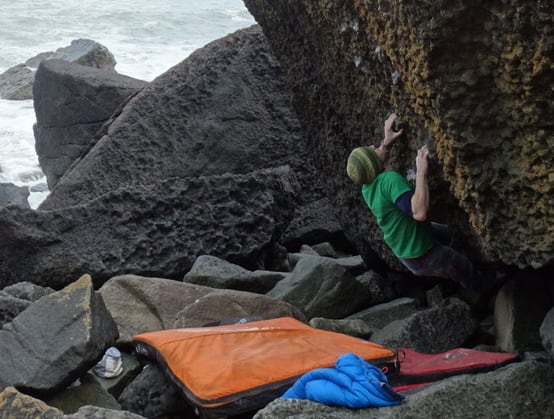
The Cost
Good stuff don’t come cheap and you get what you pay for. If what you get is good, you should expect to spend a bit more. With these, you do need to pay more.
A DMM Highball (not a favourite of mine at all) will set you back £240 RRP. The Ocun Dominator (a reasonable pad in my opinion) is £240 RRP while the Moon Saturn is £275.
The CIRRO breaks the three hundred mark and RRP is £330. The smaller ALTO retails at £250 while the little NIMBO is a little more than you’d expect at £64! Still, these are retail prices and discounts can be found everywhere and while they are a little more than the competition, I still feel they are worth it.
Verdict: expensive but worth it
Conclusion
I started this with the fact that I love these pads and I think this shows many of the reasons why. Most of the features that were originally advertised are actually useful and they have certainly stood the test of time. The cover has been replaced after the zip started to fail and the corners have had issues with wires sticking out and scratching my hand once. The foam is still almost as good as it was new and still does exactly what it’s supposed to do: give you a safe and comfortable landing.
The price may put many UK climbers off but it doesn’t seem to on the continent and a plethora of Petzl pads are often found in Font and Magic Wood aplenty. There is a good reason for this and if you’re in the market for a new pad, the CIRRO and ALTO should definitely be on your short list.
Pete Edwards runs a climbing coaching company called Prowess Coaching. You can visit his Instagram and Facebook page.
Pete's also written a guest article on 3D climbing films and a comparative piece on the new Petzl Grigri models.

